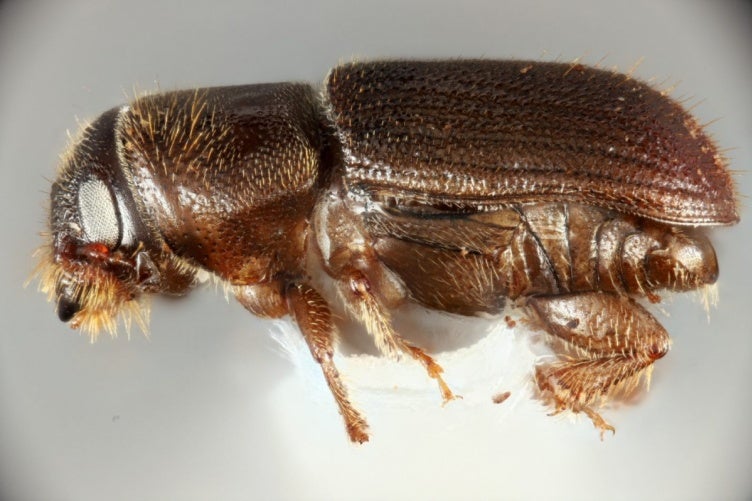The U.S. Army Corps of Engineers are urging landowners to inspect any pine trees on their property for damage by beetle infestation as the entire region is facing the worst infestation of three beetle species since 2007.
The infestation of 2006-2007 caused $128 million in damage to the timber industry and this recent invasion covers 485 acres of state owned land at Clarks Hill and grows larger every day.
Currently, the Corps is having to cut down hundreds, if not thousands of trees. Most of the culled wood cannot be sold commercially due to the damage. As a result, pine pulp values have fallen tremendously.
According to David Quebedeaux, park ranger for the Corps, the current infestation may reach or even exceed the levels of 2007.
“This is a real-time catastrophe and everyday it is getting bigger and worse,” Quebedeaux said.
It is normal to see minor infestations about every 10 years; however, the combination of a relatively mild winter and rainy summer created the perfect conditions for populations of southern pine, ips and turpentine beetles to soar.
The worst of the three species is the southern pine beetle, according to project forester for the Corps, Erin Murphy, which is about the size of a grain of sand. Murphy says the beetles act like vampires on the pine tree, attacking the outer cambium layer, which acts like the blood vessel system in the human body.

“The beetles feed on the cambium layer and they bring along with them the blue stain fungus and this combination creates a barrier for water to travel from the root to the crown and the effect is that the tree has no nutrients and dies,” Murphy said.
Once the beetles kill one tree, they move on to the next with alarming speed and before long an entire forested area will become infected.
The signs of an infestation are “popcorn” buds that form on the bark and as the tree dies, the needles turn red and the limbs begin falling off.
The only remedy is to cut the tree down and then cut down the trees in a perimeter around the dead tree, since once one tree is dead, the others around it are already likely infected even if they show no signs.
Quebedeaux and Murphy say that landowners should take immediate action if they notice red pine needles in the summertime when those needles should be bright green. In a matter of days a healthy tree can suddenly become a hazard as all it takes is a strong wind to knock it down.
“They don’t know property lines and they don’t care. It is amazing how quickly they move,” Murphy said.
Scott Hudson is the Senior Investigative Reporter and Editorial Page Editor for The Augusta Press. Reach him at scott@theaugustapress.com










